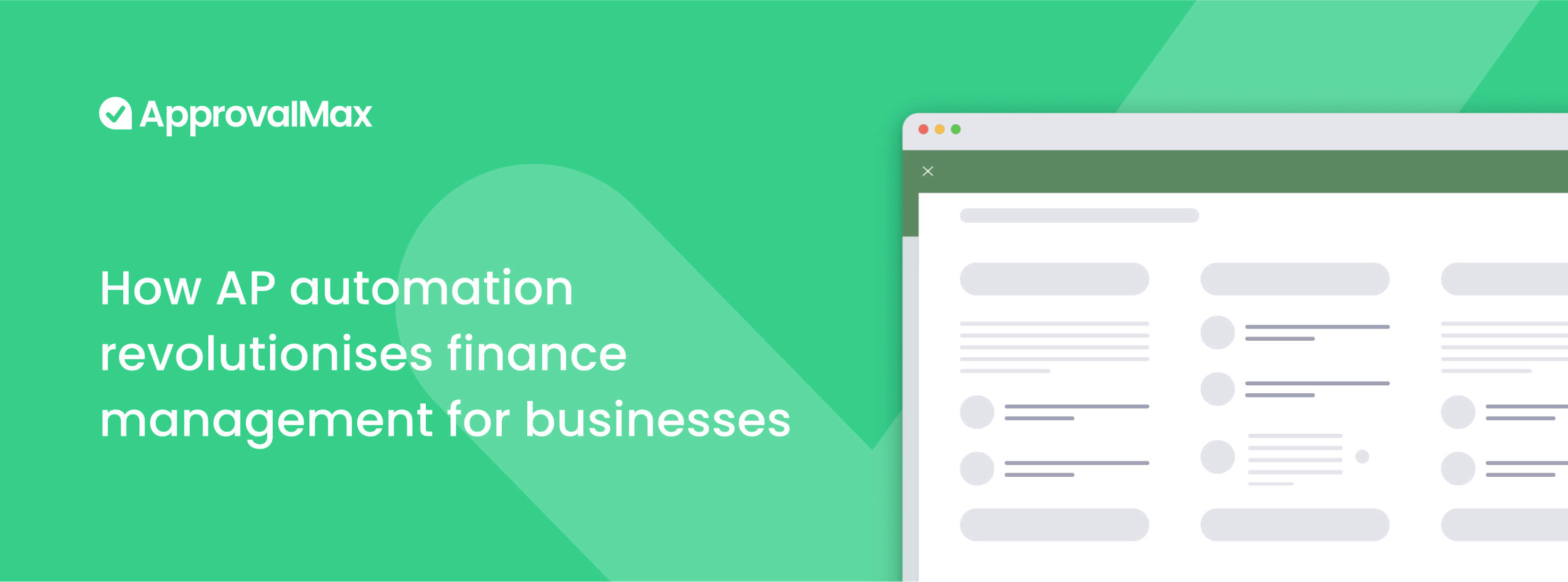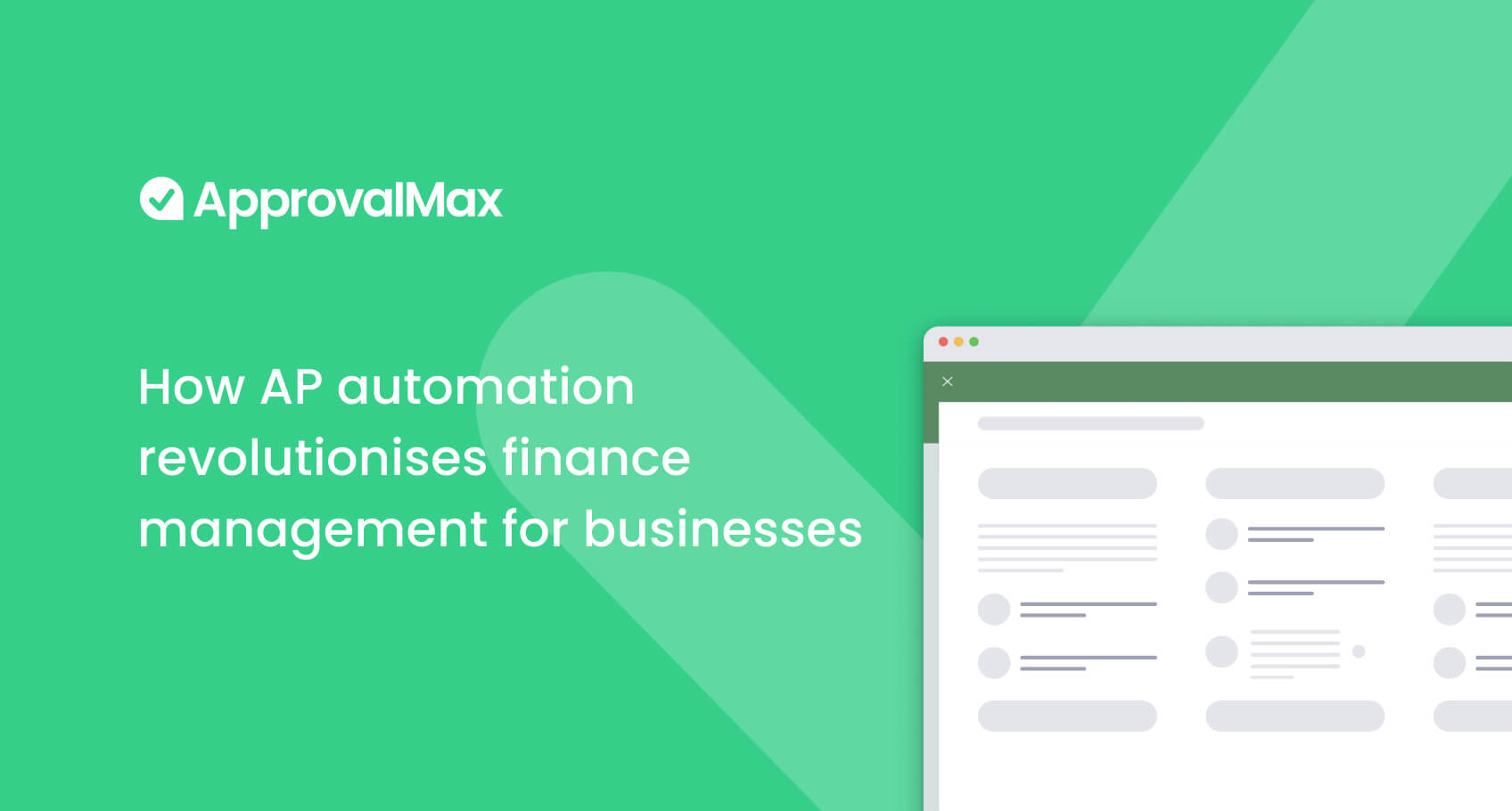How AP automation revolutionises finance management for businesses

Written by Jin Lee, digital strategy analyst at W.L.P Group
The accounting industry is constantly evolving, and the introduction of new technologies such as approval automation is revolutionising the way businesses manage their finances. With approval automation, businesses can say goodbye to various accounting tasks such as invoice approvals, purchase order approvals, and expense approvals. Automation allows businesses to easily manage their cash flow, remain compliant with accounting regulations, and make more informed decisions.
AP automation is changing the way businesses manage their finances and it’s time to take advantage of it if you aren’t already.
In this guest blog, Jin Lee from W.L.P Group explores the benefits and challenges of approval automation and how it’s transforming finance management for businesses worldwide.
3 key benefits of approval automation for large businesses
As a professional in the finance industry, I have witnessed the way approval automation is revolutionising the way businesses manage their finances. The advantages are apparent and tangible, ranging from increased efficiency in accounting processes to ensure regulatory compliance. It’s no surprise that a growing number of businesses are embracing this technology. Here are just a few of the benefits of approval automation:
Improved Efficiency and Accuracy
Every accountant is aware of how repetitive and time-consuming some accounting tasks can be. Fortunately, approval automation is a game-changer in simplifying the management of accounts payable and making accounting processes more efficient. With automation, tasks such as invoice approval are streamlined, significantly reducing the time and effort required to process invoices. Automation also minimises the risk of errors, such as missed deadlines or incorrect approvals. By leveraging automation to streamline accounting processes, businesses can optimise their resources and focus on higher-level tasks.
Better Cash Flow Management
Managing cash flow is vital for businesses of all sizes. It’s a key responsibility of CFOs in every company, and one that every accountant must be able to advise on. Approval automation makes it easier to manage cash flow by ensuring that invoices are paid on time and that expenses are processed promptly. This can be particularly helpful for small businesses that are more susceptible to challenges related to cash flow management. By automating the approval process, businesses can more accurately predict their financial situation and plan accordingly, leading to improved financial stability and growth.
Improved Compliance with Accounting Regulations
Managing finances and compliance with regulations can be a challenging task for any business. To address this issue, one effective solution is to automate the approval process for invoices and expenses. This approach ensures that all transactions are reviewed and approved in accordance with established policies and procedures, which is essential for remaining compliant with regulations like the Payment Card Industry Data Security Standard and the General Data Protection Regulation.
One notable example of a successful implementation of approval automation is JPMorgan Chase. The bank has implemented an automated invoice approval system that includes built-in controls to ensure that all invoices are approved according to established policies and procedures. By leveraging this system, JPMorgan Chase has been able to meet the strict regulatory requirements set forth by the Sarbanes-Oxley Act, which mandates accurate financial record-keeping for publicly traded companies.
Preparing your organisation to onboard an approval automation tool
As I continue to work with organisations on their digital transformation journeys, I have seen how approval automation tools can be essential for streamlining business operations and ensuring compliance. If you’re considering implementing an approval automation tool in your organisation, I would like to share five tips to help you prepare for a successful onboarding experience:
Assess your current processes: It’s crucial to assess your current approval processes before implementing an approval automation tool. This step allows you to identify the areas that would benefit most from automation. During the assessment, you should to look out for bottlenecks, pain points, and inefficiencies that could be addressed with automation. Some of the areas that could be highlighted include approval workflows that are slowing down operations. By assessing current processes, you can ensure that the approval automation tool is implemented effectively and enhances productivity.
Define your goals: It’s important to define your goals for automation. This may include objectives such as cost and time savings, improved accuracy, streamlined audits, better cashflow management, or all of the above. By clearly defining your goals, you can select the best automation tool for your organisation and ensure that all stakeholders are aligned and working towards the same objectives.
Identify key stakeholders: It’s important to identifying key stakeholders who will be using the product and their pain points. This helps define a delegation of authority with automation in mind, ensuring that everyone involved is comfortable with the new approval processes. Something that can be easily done is to identify these key stakeholders and gather insights into their specific needs and requirements, in order to ensure the successful adoption of the new approval automation tool.
Evaluate automation software solutions: There are several automation tools on the market, and it’s important to evaluate them carefully to find the best fit for your organisation. Consider the integrations with your current tech stack, how adaptable the product is to change, and the potential for future company growth.
Start a trial: To begin the process of implementing automation software for your organisation, you should start by evaluating potential solutions and determine the best fit. Once you have identified the best option for your company, you can start a trial to gain firsthand experience with the product and assess its suitability for your business needs. Many SaaS businesses now offer a free trial for users to test out their software. For example, ApprovalMax offers a 14-day free trial to help you get started.
The world is evolving with approval automation
Approval automation isn’t just a trend. I believe that it’s a powerful tool that can revolutionise the way businesses manage their finances. We can see that technology is increasingly integrated into accounting firms and approval automation is quickly becoming a necessity for finance professionals and businesses worldwide.
I have talked about the many advantages of using approval automation in accounting processes, including improved efficiency and accuracy, better cash flow management, and enhanced compliance with accounting regulations. However, before businesses can enjoy these benefits, it’s important to prepare for the transition. Some preparation tasks that I recommend include identifying key stakeholders and decision-makers, auditing current accounting processes, and trialling new software to ensure it fits seamlessly with existing technology.
It may seem daunting at first, but the investment in automated approved processes is worth it in the long run. The future of accounting is moving towards automation and businesses that adopt this technology will be more competitive and efficient.
About author
Jin is the digital strategist at WLP Group and has over five years of experience in web development, software development and digital marketing of helping SMEs in Singapore.
Get started today with a 14-day free trial
You’re just a few steps away from using automated workflows that will save time for the whole team!


